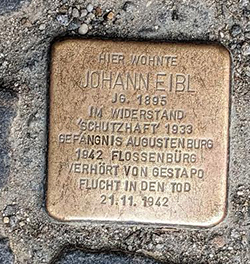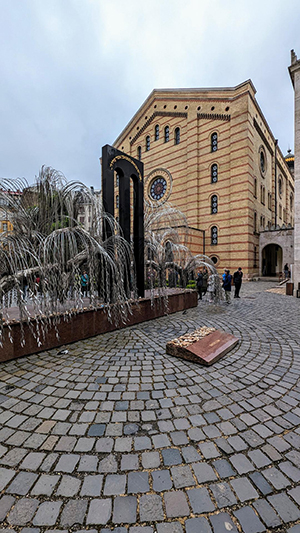Story and Photos by Ben Dishman
 SAN DIEGO — On a recent cruise down the Danube River from Regensburg, Germany, to Budapest, Hungary, I felt a sense of unhappiness, but at the same, during my meals with other passengers I felt both surprised and enlightened.
SAN DIEGO — On a recent cruise down the Danube River from Regensburg, Germany, to Budapest, Hungary, I felt a sense of unhappiness, but at the same, during my meals with other passengers I felt both surprised and enlightened.
I saw and heard no outright antisemitism while in any of these countries while at the same time I saw a side of mankind that was shocking. During the tours of the Jewish quarters of each town, I was dismayed to see just how small an area the Jewish communities had encompassed.

The tour guides were not Jewish and referred to the inhabitants of the quarter as “Our Jews.” They would point out highlighted areas in the German towns where the synagogues had been. One town even had a memorial in what had been the Jewish quarter that consisted of a permanent cement outline, 40 x 20 feet, of a former shul. There was some Hebrew wording on the steps. What was missing were the Jews. The guides pointed out that the Jews of the town had been displaced and murdered multiple times during the centuries. They did not really highlight the Holocaust.

There were brass plaques called “stumbling blocks” in the towns’ small Jewish quarters. They were placed near where a Jewish person had lived before the Holocaust. You could see that locals had used Jewish gravestones as building materials for nearby structures.
I was glad that these towns were memorializing man’s inhumanity to their Jewish residents. Such displays represented the hope that history would not repeat itself.
Vienna, Austria’s impressive Jewish Museum focused on antisemitism in the 20th Jewish community before and during the Hitler era. The museum is split into two areas, one modern and one highlighting oldest synagogue in Europe. Above the oldest synagogue was an inverted library dedicated to the thousands of Jews of Vienna who had been murdered.

Budapest, Hungary, had the most impressive synagogue designed by Christian architects (Dohany Street Synagogue), down to the pipe organ. Synagogue tours led by young Israelis were informative. Security inside was also provided by Israelis. Outside the Jewish quarter armed Hungarian police made their presence noticed. The Hungarian government provided $5 million toward restoration of the Dohany Street Synagogue after the war and Tony Curtis and Estee Lauder divided the rest of the $20 million total.
Prague, Czech Republic’s Jewish quarter is probably the best-preserved ghetto. The Altneu (Old New) Synagogue was built in 1270 and is still functioning. In 1868 the Spanish synagogue was built in Moorish style. The rest of the Jewish quarter was destroyed in the 19th and 20th century and is now a collection of drinking establishments.

I said I found it depressing to see. I have to describe my vacation venues as towns with Jewish “amusement parks.” People lined up at times around the block to take a look at the remnants of what once had been a thriving Jewish community. These were small Jewish quarters with few Jews. My hope is that for years to come the communities that surround these Jewish quarters will require local students to see what horrors had been inflicted by ignorance and prejudice.
I also said that I found the cruise enlightening. Of the 150 or so fellow cruisers there where only a handful of Jews. With open seating we had dinner with people from all over the United States. I was afraid with the war in Gaza quite active at the time, that I would get into heated discussions. To my surprise guests from Tennessee to Texas and Idaho to Oregon, in fact, every last Christian and Catholic dining mate, was pro-Israel.
Many of them even cited how much support there is in the U.S. for the State of Israel and said that they were ashamed of the behavior of many students at American universities. Others said they would bring their children to see some of the exhibits in Europe and in the US to understand just what had occurred during the Holocaust.
*
Ben Dishman, a retired pharmacist, is president of the Tifereth Israel Synagogue Men’s Club and a freelance writer and photographer.
You come across as looking for antisemitism. Whether you find it in droves or not all, it’s a poor character trademark to carry around.
You are quick to characterize my feelings. I did not send pictures or mention the disgusting anti-Israel graffiti I encountered under bridges in Austria because I felt it was isolated and not part of current Austrian culture.
If one reads the news as distorted by AP, New York Times, Newsweek, CNN etc., you would need to be reading with rose-colored glasses to not see their double standard when covering the world’s only Jewish state.